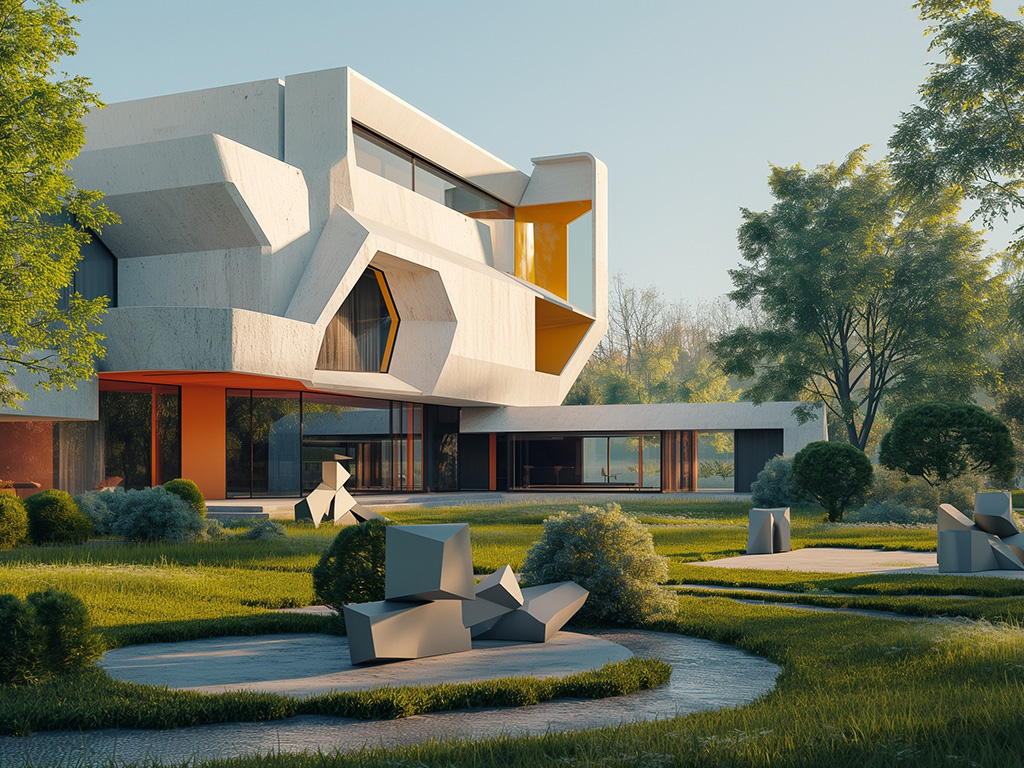
Appearing in the 1960s, postmodern architecture is the origin of unique, original, and irreverent works that directly oppose the standards of the modernist international style. It first emerged in the United States and Europe, then spread rapidly throughout the world in various forms. Its influence continues to propagate within contemporary architecture today.
THE BIRTH OF POSTMODERN ARCHITECTURE
Postmodern architecture emerged in the 1960s/70s as a critical reaction to modernism, particularly the international style championed by Le Corbusier and Ludwig Mies van der Rohe. For the pioneers of what was not yet a clearly defined architectural movement, the goal was to introduce a radical break from the modernist movement. Architects such as Robert Venturi and Charles Jencks in the United States, as well as the Italian architect Rossi, challenged the rigidity of modernism, its uniformity, the lack of ornamentation in its works, and its tendency to ignore the history and culture of the cities where the works were conceived.
AN EVOLUTIONARY CRITIQUE OF MODERNISM
With postmodernism, the idea is to put an end to modern architecture (and the artistic movements associated with it) and its utopian pursuit of perfection. To achieve this, architects call for the use of unconventional materials, the reintroduction of historical allusions in their works, and the subtle combination of elements from high culture and popular culture to be understood by a wider audience and to preserve the historical fabric and local traditions of the cities in which they are created. Robert Venturi, one of the main theorists of postmodernity in architecture, summarized in 1966: "I speak of a complex and contradictory architecture based on the richness and ambiguity of modern experience".
KEY FEATURES OF POSTMODERN ARCHITECTURE
Following the ideas formulated by Venturi, Jencks, and Rossi, many architects responded to the call in France, Japan, Spain, Australia, and the rest of the world. Postmodern architecture then thrived in the 1980s and 1990s, dividing into multiple trends. Despite this diversity of forms, several key characteristics can be identified in postmodernism within the field of architecture:
- A radical departure from the functionalism of modernism, its pursuit of perfection, and its rejection of ornamentation;
- The return of ornamentation and architectural references;
- A focus on the facades of buildings, which must integrate historical and cultural elements that have a strong evocative power for the public;
- The search for exuberance, the juxtaposition of architectural epochs, exaggeration (or on the contrary, restraint) to create original, surprising, mischievous, and even provocative works;
- The use of symmetries;
- The reintroduction of color;
- The highlighting of new techniques and construction processes;
- The assertion of historical continuity and respect for the existing.
CELEBRATED POSTMODERN CREATIONS
Postmodern architecture is present today in numerous countries around the world. It is even one of the dominant trends in several cities of gaming and entertainment such as Las Vegas, Dubai, or the Val d'Europe district near Disneyland Paris. Among the most famous postmodern works, we can find in France the Espaces d'Abraxas in Noisy-le-Grand designed by Ricardo Bofill in 1983, the Pizza d'Italia in New Orleans completed in 1978 by Charles Moore, the Team Disney Building by Michael Graves in Burbank (dating from 1986), the Dancing House by Vlado Milunic and Frank Gehry in Prague, the Industry City Mural by Camille Walala in Brooklyn, New York (2018), or the Zaandam Hotel by Wam in Amsterdam created in 2010.
Do you appreciate the originality of postmodern architecture? Michaël Zingraf Real Estate offers exceptional real estate properties in the most beautiful destinations around the world.



